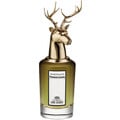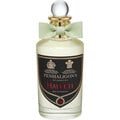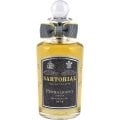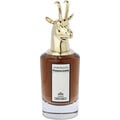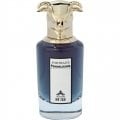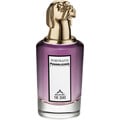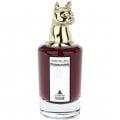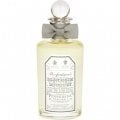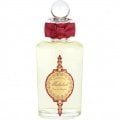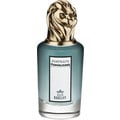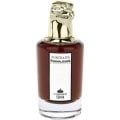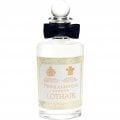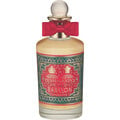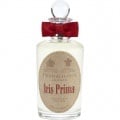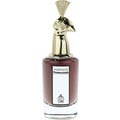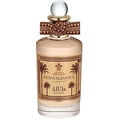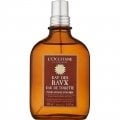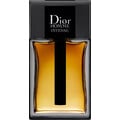Hello you fragrance-loving noses :)
Welcome to a new scent commentary from me! Today I tell you again about one of my favourite brands, Penhaligon's, which is a great British fragrance house. Today I would like to introduce a fragrance from the pretty good Trade Routes Collection. As you know, the fragrances in this collection can be quite spicy and opulent, as the theme here is the trade with precious and exotic goods from all over the world in the London docks at that time.
These fragrances take us back to the beginnings of the 19th century, where you could perceive all kinds of fragrances at these docks. And I'm not talking about bad smelling waste, rotten fish or body smells covered with scented water (which was quite common at that time), but about precious spices, leather, probably even perfumes from France and the Orient. Of course there were still strange foods for the people at that time, it could be that somehow also strange things like coriander came to England, which the British then found so great and made it known all over the world by their supremacy at that time, which is surely the reason why today coriander is an often used fragrance, which I do NOT like so GAR... but good,... I don't get upset, because immediately I smell one of these great Trade Routes fragrances.
It's about the fragrance Agarbathi, which is pronounced like... well, just like Agarbathi :D
But what does this name mean? It is the Hindi or Indian name for the world-famous incense scent Nag Champa, which consists mainly of flowers from iron tree species and sandalwood.
The fragrance:
The fragrance begins slightly citric and also fruity-sweet. The citrus comes from the bergamot, which looks a little like a lime in a cocktail. The fruity is also spicy and comes from the pink pepper, which is actually a berry type and therefore beerig fruity smells and not of real pepper. However, these fragrances, which make a rather fresh impression, are only of short duration, since all this quickly moves into the background, since the fragrance soon turns up the resins. Therefore it continues quite fast with the incense, where you can smell some wood already now.
While the fruity-sweet scents gradually disappear from the beginning, a new sweetness emerges with jasmine, which smells nice and also goes well with incense. I couldn't smell the indicated milk chord, luckily... because I find the smell of milk chord, which often smells like boiling milk, simply terrible!
In the base, the fragrance now remains mostly with incense or resins and woods, with the sweet jasmine these continue to work very beautiful and pleasant. In addition, there is a rather less identifiable, earthy fragrance, which probably comes from vetiver, as well as pleasant sandalwood. Tannenbalsam is of course also beautiful and smells of wooded resins. And so the scent remains then, mainly resinous and airy-sweetly smoked. A beautiful fragrance.
The Sillage and the shelf life:
Despite the resins and spices, the Sillage is not as strong as one might imagine. Of course, the scent is not weak, but there are stronger resinous scents. But you will also be well noticed with this fragrance here, especially from close up. The shelf life is pretty good with over ten hours duration.
The bottle:
The bottle is the usual cylindrical-clear container, which has a striking and elaborate label on the front and which this time feels like fabric (because it is probably also made of fabric...). Matching the dark blue-golden colour of the label, there is also a bow in the same colours, which was attached to the lid as usual, so that the flacons simply look more beautiful.
Oh yes, it must have been great to walk around the docks at that time, under the strict eyes of the patrolling Redcoats, but also horrified Englishmen, when they had observed that people like me had drunk their tea WITHOUT milk :D
But of course you romanticize the whole thing... because you have to keep in mind that especially at a dock at the beginning of the 19th century, hygiene was a thing of the past and you surely died of an infection at the slightest scratch! Not to mention that there was NO perfume!!! Yeah, yeah, you ever think of that? :DD
Be that as it may, the scent conveys well the scent of incense sticks. But if all this smells exactly like this one Indian incense stick, I can't say, because I don't know these particular incense sticks. I assume, however, that there is a certain similarity, since according to the description the Nag Champa incense sticks are supposed to smell like incense and sandalwood, which is also the case here with this Penhaligon's scent.
From a feeling point of view, the fragrance is an autumn and winter fragrance, but it is not too heavy and could therefore also be worn at work during the day if the dosage is not exaggerated. He might come off a little too unspectacular to go out, though. I liked the light, fruity notes in the background, which make this fragrance stand out from other resinous scents, because many resinous scents only seem to smell of resins and spices (which of course is not bad :)) and here you can smell berry fruits in the background for a while.
Although Agarbathi is not the best fragrance among the Trade Routes for me, I would definitely recommend it for a test, because it is simply well done!
Well, that's it, then. Have a nice evening and a nice week start tomorrow :)






 Top Notes
Top Notes 


 Heart Notes
Heart Notes 


 Base Notes
Base Notes 







